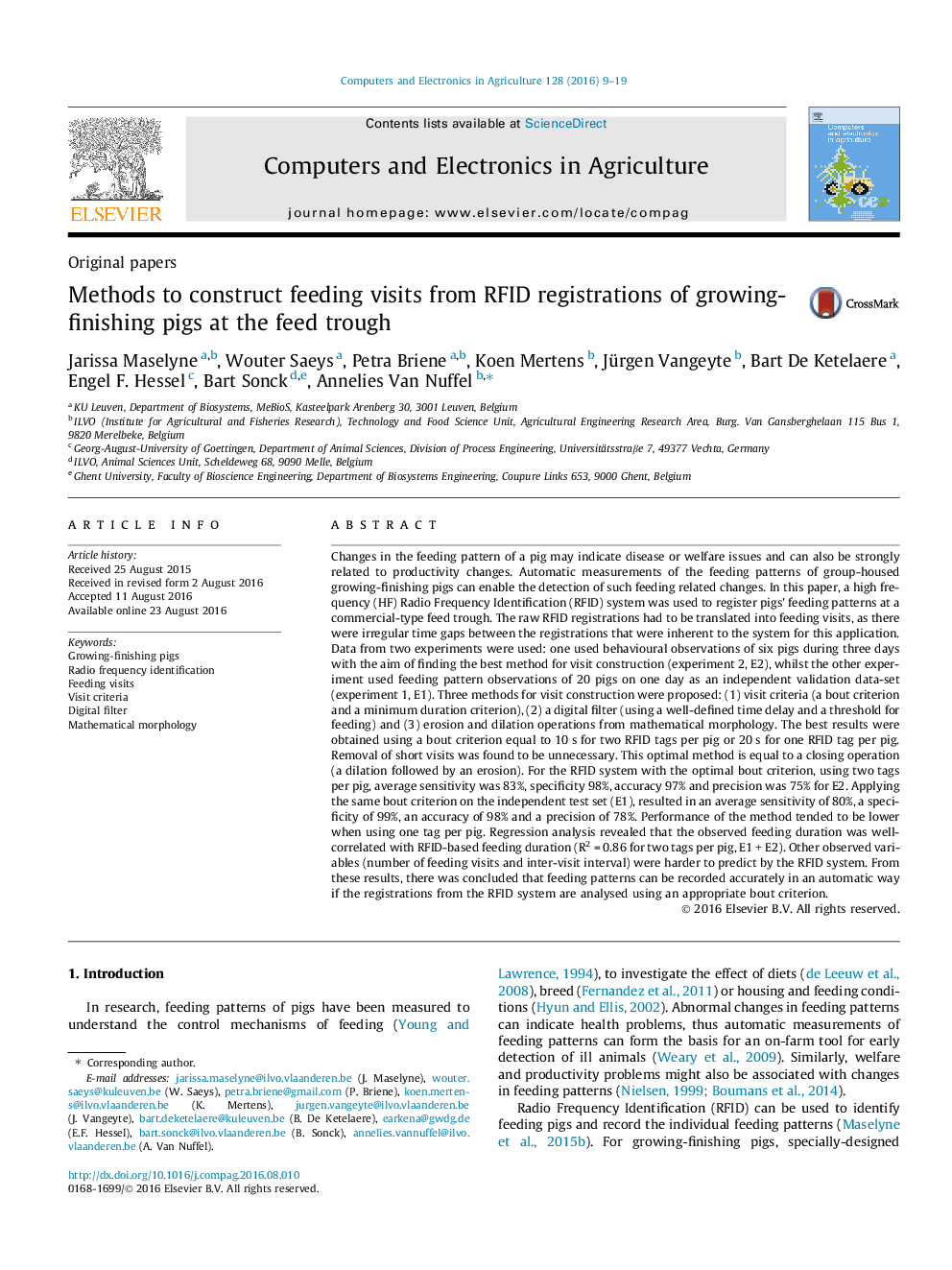| کد مقاله | کد نشریه | سال انتشار | مقاله انگلیسی | نسخه تمام متن |
|---|---|---|---|---|
| 6458893 | 1421120 | 2016 | 11 صفحه PDF | دانلود رایگان |

- Three methods for feeding visit construction out of HF RFID registrations were tested.
- The best method was a bout criterion equal to 10Â s for two RFID tags per pig.
- Sensitivity was 83%, specificity 98%, accuracy 97% and precision was 75%.
- Performance tended to be lower when using one tag per pig.
- Observed feeding duration was well-correlated with RFID-based duration of visits.
Changes in the feeding pattern of a pig may indicate disease or welfare issues and can also be strongly related to productivity changes. Automatic measurements of the feeding patterns of group-housed growing-finishing pigs can enable the detection of such feeding related changes. In this paper, a high frequency (HF) Radio Frequency Identification (RFID) system was used to register pigs' feeding patterns at a commercial-type feed trough. The raw RFID registrations had to be translated into feeding visits, as there were irregular time gaps between the registrations that were inherent to the system for this application. Data from two experiments were used: one used behavioural observations of six pigs during three days with the aim of finding the best method for visit construction (experiment 2, E2), whilst the other experiment used feeding pattern observations of 20 pigs on one day as an independent validation data-set (experiment 1, E1). Three methods for visit construction were proposed: (1) visit criteria (a bout criterion and a minimum duration criterion), (2) a digital filter (using a well-defined time delay and a threshold for feeding) and (3) erosion and dilation operations from mathematical morphology. The best results were obtained using a bout criterion equal to 10Â s for two RFID tags per pig or 20Â s for one RFID tag per pig. Removal of short visits was found to be unnecessary. This optimal method is equal to a closing operation (a dilation followed by an erosion). For the RFID system with the optimal bout criterion, using two tags per pig, average sensitivity was 83%, specificity 98%, accuracy 97% and precision was 75% for E2. Applying the same bout criterion on the independent test set (E1), resulted in an average sensitivity of 80%, a specificity of 99%, an accuracy of 98% and a precision of 78%. Performance of the method tended to be lower when using one tag per pig. Regression analysis revealed that the observed feeding duration was well-correlated with RFID-based feeding duration (R2Â =Â 0.86 for two tags per pig, E1Â +Â E2). Other observed variables (number of feeding visits and inter-visit interval) were harder to predict by the RFID system. From these results, there was concluded that feeding patterns can be recorded accurately in an automatic way if the registrations from the RFID system are analysed using an appropriate bout criterion.
Journal: Computers and Electronics in Agriculture - Volume 128, October 2016, Pages 9-19